May 17, 2025 | 16:22 GMT +7
May 17, 2025 | 16:22 GMT +7
Hotline: 0913.378.918
May 17, 2025 | 16:22 GMT +7
Hotline: 0913.378.918
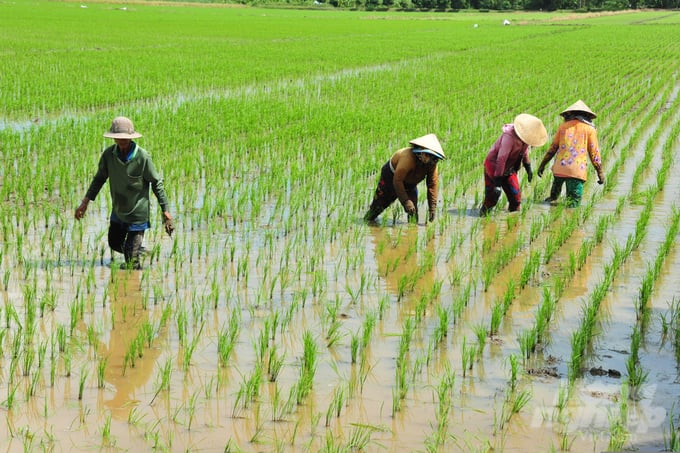
An Giang’s farmers apply water-saving irrigation techniques and see a big difference in production costs, so the method is increasingly popular among rice producers. Photo: Le Hoang Vu.
Alternate wetting and drying (AWD) is a water management technique in rice cultivation. By reducing the number of times needed to pump water and irrigate the field in a certain area, AWD proves to be an effective solution to reduce fuel and electricity costs.
For many years, An Giang farmers have been trained to master the knowledge of water-saving irrigation techniques in rice cultivation and gradually apply them in rice production such as AWD or the familiar "1 must 5 decreases" (1P5G) process, contributing to improve farmer’s profit.
Since the 2023 winter-spring crop, Nguyen Van Be, a farmer in Vong Dong commune, Thoai Son district participated in a pilot project to plant 1 ha of rice and apply water-saving irrigation methods in combination with "1 must 5 decreases" and "3 decreases 3 increases” (3G3T), according to the guidelines of An Giang agricultural sector.
As for results, the application of water-saving irrigation helps farmers manage pests and diseases better, save fresh water. The rice thrives with only a little amount of care required. The amount of fertilizer used is 25 - 30% less compared to traditional farming methods.
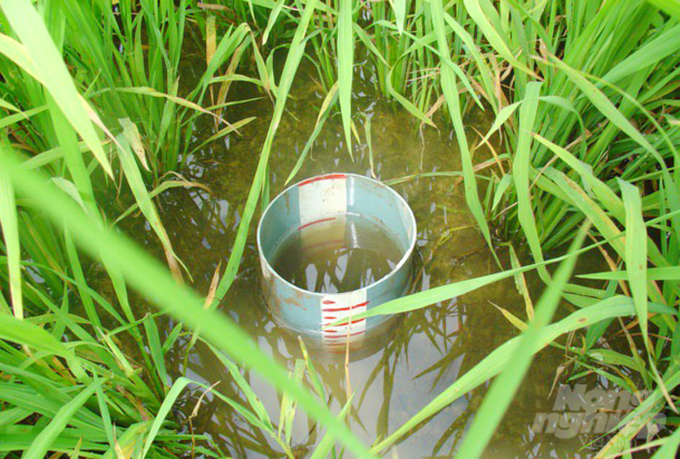
The application of water-saving irrigation techniques helps farmers manage pests and diseases better. Photo: Le Hoang Vu.
“If it was before, the winter-spring rice crop usually costs 1.6 - 1.8 million VND/cong (Vietnamese measurement, equal to 1,000 m2) on average. Thanks to the application of this new technique, the cost is reduced to 1.2 - 1.3 million VND/cong”.
Assessing the efficiency of the AWD technique, Be said that his field’s productivity is always maintained high. Typically in the last winter-spring rice crop, his family harvested 1 ha of rice, yielding 1.1 - 1.2 tons/cong, and the summer-autumn crop yielding 850- 900 kg/cong. The selling price was 6,700 - 6,800 VND/kg. After deducting all expenses, Be's family gained a 40% profit for each crop.
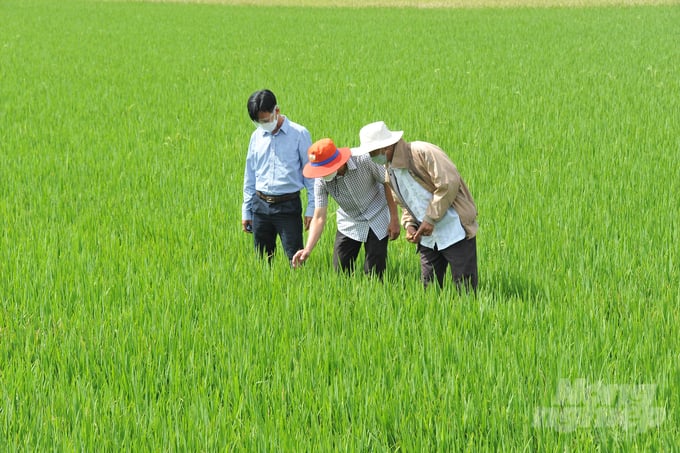
Applying AWD in the experimental fields always results in a 0.5 tons/ha increase in yield. Photo: Le Hoang Vu.
Truong Kien Tho, Deputy Director of An Giang Department of Agriculture and Rural Development, says that agroproduction is facing a series of challenges under the impact of climate change, namely water resources are under serious threat.
“Facing the current situation, developing water-saving irrigation techniques to use water resources efficiently and sustainably in agriculture has become a common trend in many countries around the world, and Vietnam is no exception”.
According to his explanation, rice cultivation using AWD can help rice growers reduce greenhouse gas emissions by 20-30% compared to continuous flooding of rice fields. This reduction is significant because rice production is responsible for 15 - 25% of global methane emissions.
“The next step is to lessen the use of inorganic nitrogen fertilizers to reduce nitrous oxide emissions. Fully utilizing rice straw as a source of fertilizer is a way to replace Inorganic nitrogen fertilizers with organic fertilizers. This has a dual benefit. Farmers no longer burn rice straw in the field, and the situation of carbon emissions is also less severe”.
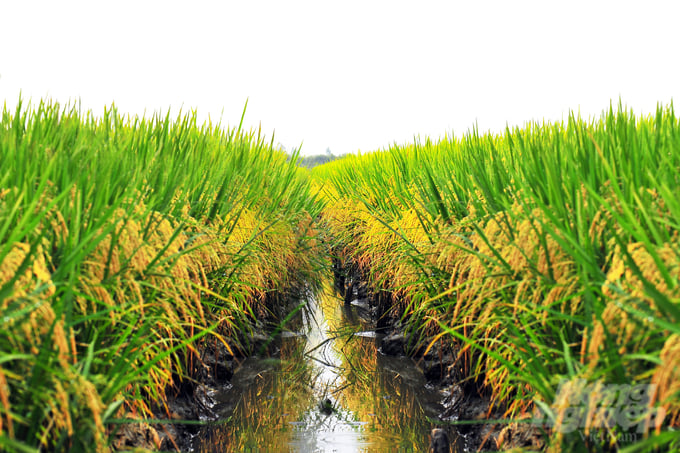
Not only reducing greenhouse gas emissions, but water-saving irrigation also helps rice become stronger and give more yield. Photo: Le Hoang Vu.
The International Rice Research Institute (IRRI) transferred the AWD technique to the Plant Protection Department in 2005. The technique was successfully tested in An Giang, Dong Thap, Tien Giang, and Can Tho.
AWD is now considered the most effective method and is highly recommended by experts. In the Mekong Delta, many locations with high terrain often lack water in the dry season, so water-saving rice cultivation is seen as a promising new farming method.
Nguyen Van Hien, Director of An Giang Sub-department of Crop Production and Plant Protection, says that An Giang is one of the provinces with the largest rice production in the Mekong Delta with an output of over 4.2 million tons of commodity rice per year.
“Thanks to the technology transfer from IRRI, An Giang has been able to implement this technology since 2005 and even developed a water-saving irrigation scheme to help farmers further reduce watering costs in rice cultivation”.
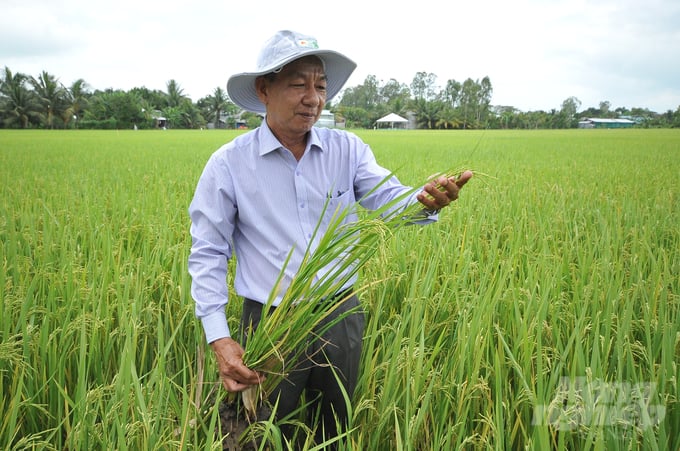
Nguyen Van Hien, Director of An Giang Sub-department of Crop Production and Plant Protection, believes that rice cultivation applying water-saving techniques in combination with effective models such as 1P5G or 3G3T is a sustainable, environment-friendly direction for the agricultural sector. Photo: Le Hoang Vu.
Over the years of implementing the water-saving irrigation program, farmers have been able to see the overall benefits of the program, such as stronger stalks, longer panicles and more solid grains, reduced fall of rice plants thanks to deeper roots. The number of times to pump water is reduced, resulting in lower input costs. The yield is 0.5 tons/ha higher than that of normal farmers' fields. Since then, AWD has been widely applied in the province’s rice production areas, up to a total of 500,000 ha at the moment.
Translated by Samuel Pham

(VAN) Muong Nhe Nature Reserve hopes that being upgraded to a national park will lay the foundation for forest protection efforts to be carried out in a systematic, modern, and sustainable manner.
/2025/05/16/3923-2-171845_52.jpg)
(VAN) Lower costs, higher yields, and improved soil quality are outstanding benefits that soybeans bring when integrated into the crop rotation system.
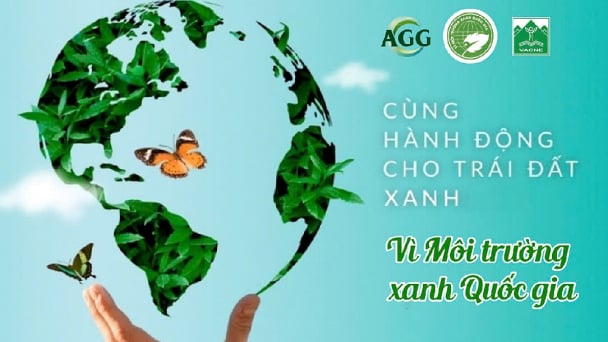
(VAN) The 'For a Green National Environment' programme aims to promote a green lifestyle, support businesses in implementing ESG practices, and turn Net Zero commitments into concrete actions.

(VAN) Cold-barn systems efficiently manage environmental and temperature conditions, which aids in the prevention of respiratory diseases in pigs and protects them from the vectors that transmit African swine fevers.
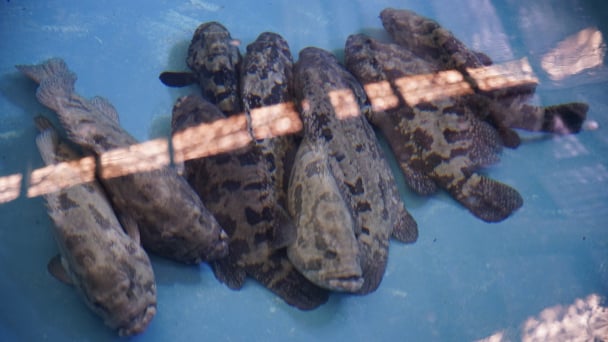
(VAN) To tackle challenges, the project 'Addressing key technical bottlenecks in the grouper supply chain in Vietnam' has been underway since 2024.
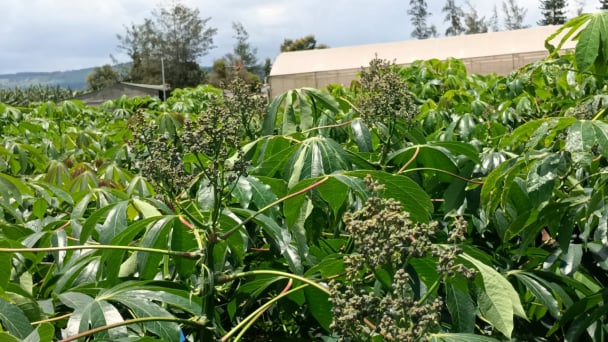
(VAN) The project 'Disease-Resilient and Sustainable Cassava Production Systems in the Mekong Region', funded by the Australian Center for International Agricultural Research (ACIAR), is being implemented from 2024 to 2028.
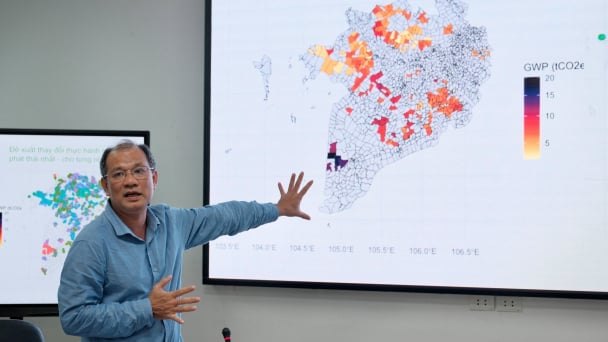
(VAN) Data from 10,000 farming households will help professionalize production organization and support the implementation of the One Million Hectares Program for High-Quality, Low-Emission Rice Cultivation.